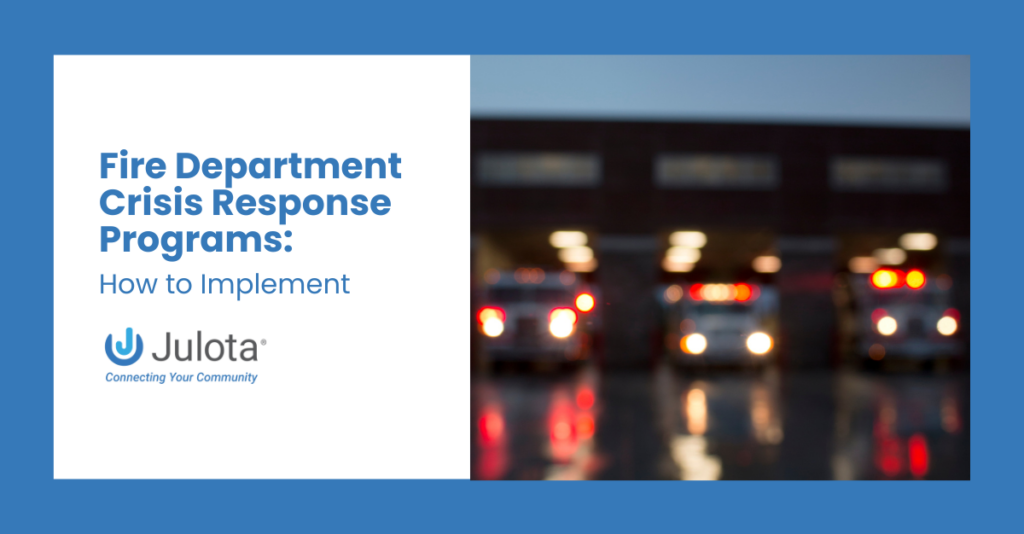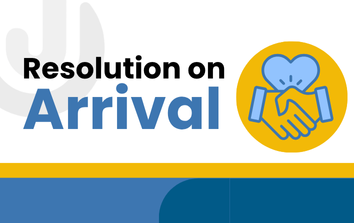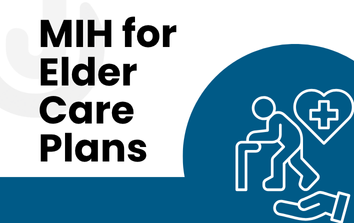Modern fire departments do far more than extinguish fires. According to the U.S. Fire Administration, only 4% of reported fire department runs involve fires. Most calls today require a diverse range of skills and resources. This transformation reflects the growing need for crisis response programs tailored to the unique needs of each community.

The Growing Importance of Fire Department Crisis Response Programs
Fire departments have evolved from solely fighting fires to becoming comprehensive emergency response teams. In 2020 alone, fire departments handled 26,959,000 incidents, 64% involving emergency medical services and rescue operations. This shift demands advanced skills to address mental health crises, substance abuse emergencies, and the complexities of community paramedicine.
A well-executed crisis response program significantly enhances community safety. These programs reduce emergency room visits and law enforcement interventions by addressing crises before they escalate. Moreover, fire departments can build stronger support systems for vulnerable populations by working closely with mental health experts, social services, and healthcare providers. Addressing root causes early alleviates pressure on emergency services and improves outcomes for individuals in crisis.
Conducting a Community Needs Assessment
Understanding your community’s specific needs is the foundation of a successful crisis response program. Begin by evaluating emergency call patterns to identify neighborhoods or groups that frequently experience crises. Analyze historical call data, demographics such as age and socioeconomic factors, and access to healthcare and transportation.
In addition to identifying high-risk areas, assessing gaps in current response systems is crucial. Examine response times, resource availability, and specialized training needs. Evaluate how effectively your department coordinates with other emergency services. This comprehensive analysis highlights areas for targeted improvement, ensuring that your program addresses real problems rather than assumptions.
Regularly updating this assessment keeps your program aligned with the community’s changing needs, ensuring continuous improvement.
Building a Comprehensive Crisis Response Program
To create an effective crisis response program, start by integrating Mobile Integrated Healthcare (MIH) units. These units bring specialized care directly to those in need, reducing the reliance on hospital visits. Equip your units with basic and advanced life support tools, remote consultation technology, and preventive care and social services resources. Digital tools like Julota can help track patient care and streamline operations.
Multidisciplinary teams are another cornerstone of successful crisis response programs. Combining expertise from EMTs, crisis intervention specialists, social workers, and peer supporters allows the team to address immediate needs and long-term solutions. Mental health professionals play a pivotal role by assessing situations on-site or remotely, de-escalating tense scenarios, and providing trauma-informed care. They also connect individuals with ongoing support systems to ensure continuity of care.
Implementing Your Fire Department Crisis Response Program
Clear objectives are essential for guiding the development of your crisis response program. Define specific, measurable, achievable, relevant, and time-bound (SMART) goals. For instance, the aim is to reduce response times by 20% within six months or increase staff training completion rates to 90%.
Training is another critical component. Comprehensive training programs should prepare teams for diverse emergencies. Topics should include crisis intervention techniques, mental health first aid, trauma-informed care, and cultural sensitivity. Collaborative exercises with partner agencies can further enhance preparedness and foster teamwork.
Budgeting and securing funding are vital for sustainability. Calculate startup and ongoing costs, including salaries, equipment, training, and technology. Seek funding through grants, local government support, and partnerships with healthcare providers.
Leveraging Technology and Data in Fire Department Crisis Response Program
Technology plays a pivotal role in modern crisis response. Real-time data helps predict and prepare for crises, monitor response times, and identify recurring issues. Equip teams with reliable communication platforms, including incident mapping software, secure messaging systems, and telehealth capabilities. These tools streamline operations and enhance efficiency, ensuring your team can respond effectively when it matters most.
How to Engage the Community
Strong community partnerships are essential for an effective crisis response program. Collaborate with local organizations, including mental health and social service agencies, healthcare providers, and educational institutions. These partnerships expand your network of resources and expertise.
Public education is equally important. Educating the community about crisis prevention and response builds trust and encourages appropriate use of services. Use workshops, multilingual resources, and public demonstrations to raise awareness. Consider forming a community advisory board to ensure diverse perspectives shape your program.
Measuring Success in Fire Department Crisis Response Program
Evaluating the effectiveness of your program requires tracking key performance indicators (KPIs). Metrics such as response times, reduction in hospital transports, and training completion rates provide valuable insights. Additionally, gathering stakeholder feedback through surveys, listening sessions, and debriefings helps identify areas for improvement. Regularly review this data to refine your program and ensure it remains responsive to community needs.
Looking Ahead
The future of crisis response depends on adaptability and innovation. Emerging technologies such as AI for crisis prediction and VR for training are reshaping the field. Strengthening partnerships and focusing on prevention strategies will also be crucial in advancing crisis response programs.
By committing to continuous improvement and collaboration, fire departments can set new standards for community safety. Through innovative approaches and dedication to excellence, crisis response programs can effectively serve and protect communities for years to come.


